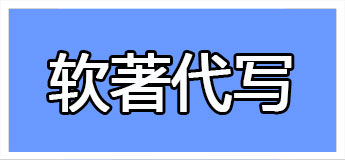
Title: A Comprehensive Guide to Software Copyright
When it comes to software, creativity and hard work are the key ingredients to success. However, protecting the fruits of your labor is equally important. Software copyright is a vital tool that grants legal ownership and recognition of your software, and prevents others from stealing or misusing it.
In this comprehensive guide, we will cover everything you need to know about software copyright. From its origins and evolution, to the differences between copyright and other forms of protection like patents and trademarks, and the eligibility and requirements for obtaining a software copyright. We will also address the common misunderstandings and myths surrounding software copyright, and provide practical tips on how to enforce and defend your rights.
The history of software copyright is a fascinating journey that dates back to the late 1960s, when software programs were merely considered as recipes or algorithms, and didn't receive the legal protection they deserved. With the rise of the personal computer industry in the 1980s and the increasing complexity and commercial value of software programs, the need for legal protection became more pressing. The first software copyright law was enacted in 1980 in the United States, and gradually, other countries followed suit.
Copyright is different from patents and trademarks, and provides distinct benefits and limitations. While patents protect inventions and processes, trademarks protect brand names and logos, and copyrights protect original works of authorship, including software programs. Copyright grants the author the exclusive right to reproduce, distribute, and display their work, and to create derivative works based on it. Copyright protection does not extend to the underlying ideas, functionality, or algorithms used in the software, which may be protected by patents or kept as trade secrets.
Eligibility for software copyright is fairly straightforward. The software must be original, creative, and fixed in a tangible medium, such as a computer program or code that can be read by a computer. Some types of software are explicitly excluded from copyright protection, such as software that only performs basic functions, like calculating or sorting data.
Obtaining a software copyright is a simple and affordable process that can be done online in most countries. The copyright application requires basic information about the author, the type of work, and the date and place of creation. It is advisable to register your copyright with the relevant authorities, as it provides additional legal benefits and makes it easier to sue infringers.
Enforcing your copyright can be challenging, especially in an era of digital piracy and global distribution. However, there are various strategies and tools that can help protect your software, from watermarking and encryption, to licensing agreements and litigation. It is important to stay informed about your rights and obligations, and to seek professional legal advice when needed.
In conclusion, software copyright is a crucial aspect of software development and distribution, and can provide significant economic and social benefits. By understanding the basics of software copyright and taking proactive measures to protect your software, you can ensure its longevity and success in the digital age.
上一篇:长春计算机软件公司获授权 全球创新引领者!下一篇:长春软件著作权专利,开创软件产业新时代
软件著作权说明书代写
一、《申请表》《说明书》《源代码》3个文档
二、300元/案子,3天内交付
三、电话/微信:139-9853-9835




